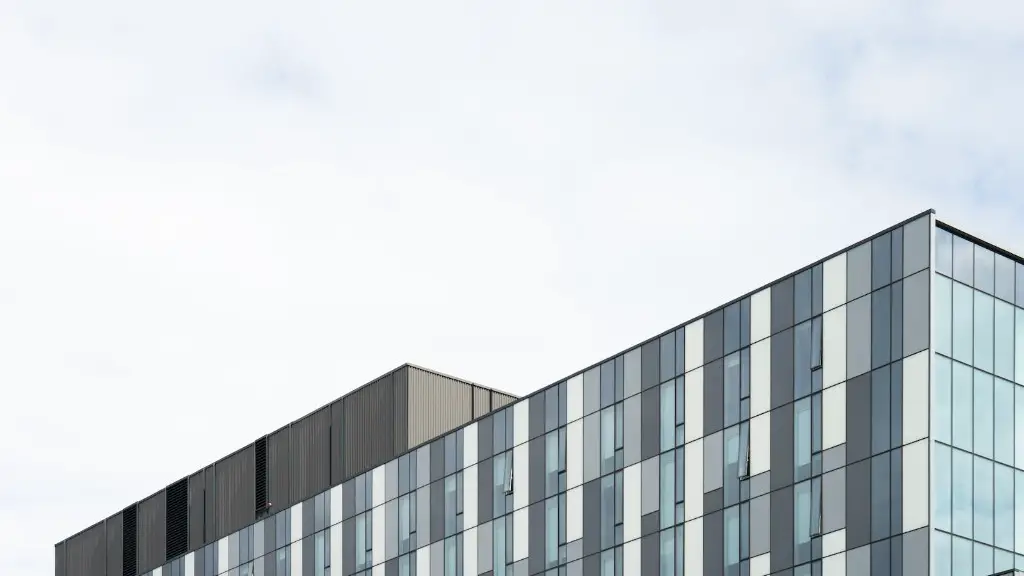When it comes to building, the number one priority is always safety and strength. That is why architects must use the best possible methods to build each structure to ensure it can withstand the elements and protect those who inhabit it. The strength of buildings can come in many forms, including their design, structure, materials, and even the environment around them. Here, we will explore why buildings stand up to the strength of architecture and how architects use different approaches to ensure they stay safe.
One important aspect of any building’s strength is its design. By looking at the way the structure is laid out and how it utilizes different materials, architects can guarantee the building will remain standing no matter what forces may come its way. Some of the most common methods to make a building strong are using a reinforced concrete frame or steel columns, ensuring that the walls are thick enough to withstand the elements and adding support beams in the corners. Additionally, the use of engineering techniques such as seismic retrofitting can also help a building stand up to the test of time.
In addition to design, buildings must also be structurally sound. To do this, architects must make sure the building’s foundation is strong and can adequately support the weight of the structure itself as well as any added load it may have from occupants or changing weather conditions. Paying close attention to the way walls and floors are laid out, and making sure that the building’s materials are capable of withstanding the force of an earthquake, are all important aspects of structural integrity.
Material selection is also an important factor when it comes to building strength. Depending on the location of the house, architects must choose materials such as wood, concrete, or steel that can stand up to the local climate, as well as any potential disasters that may occur in the area. Choosing materials that are lightweight but strong is also important, as well as picking materials that are fire-resistant and durable.
Environmental Conditions
The environment around a building can have a major impact on its strength. For example, if a building is located in an area that is prone to flooding or hurricanes, then the structure must be designed to be able to withstand these intense forces. The same applies for earthquakes, as well as extreme weather conditions such as snow, wind, and heat. Architects must take into account the local climate and terrain when designing a building, as this will help them choose the right materials and create a structure that can stand up to any challenge.
Traditional Builds
Traditional builds also have their own strengths and weaknesses. In some cases, a traditional build may be the only option as it is more cost effective. Traditional builds are built to last, however, they still require maintenance and upkeep to make sure the structure is strong and secure. Additionally, traditional builds may not be the most efficient when it comes to energy efficiency, as their materials and design can make them susceptible to heat transfer and air leaks.
Technology-Driven Structures
In recent years, technology has been playing a bigger role in structure strength. Technology-driven structures use cutting-edge materials, designs, and engineering to ensure they are as strong and secure as possible. A few examples of technology-driven structures include smart buildings, intelligent bridges, and 3D printed buildings. Each of these structures uses technology in unique ways, such as using sensors and advanced materials, to make them as secure as possible.
Future Trends
As the world’s population continues to grow, the need for strong and secure buildings is only going to become more urgent. In the future, architects will look to incorporate new technologies and approaches into their designs to ensure maximum safety for those who inhabit them. Some of these new trends may include the use of drones and robots to inspect and repair buildings, as well as the use of artificial intelligence algorithms to build structures that are as energy efficient as possible.
Techniques For Prevention
Having an effective strategy for preventing disasters is also essential for the strength of a building. This includes the use of technology to prevent fires and floods, as well as retrofitting old buildings to make them more secure. Additionally, building codes and regulations should also be carefully followed and updated to ensure that the safety of a building is always top of mind. By following these guidelines and properly preparing for potential disasters, architects can ensure that the strength of their buildings stands up to the test of time.
Testing Procedures
Finally, before a building is approved for occupancy, several tests must be conducted to assess its strength. During these tests, everything from its overall design and materials to its environmental conditions is examined to make sure the building is up to code. Additionally, architects must also make sure that the building is able to withstand the necessary stress of the local area so that it can provide a safe and secure space for its inhabitants.


